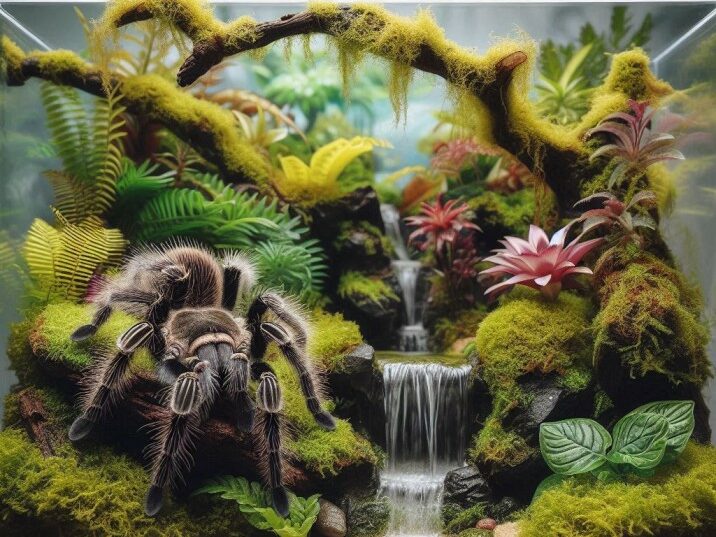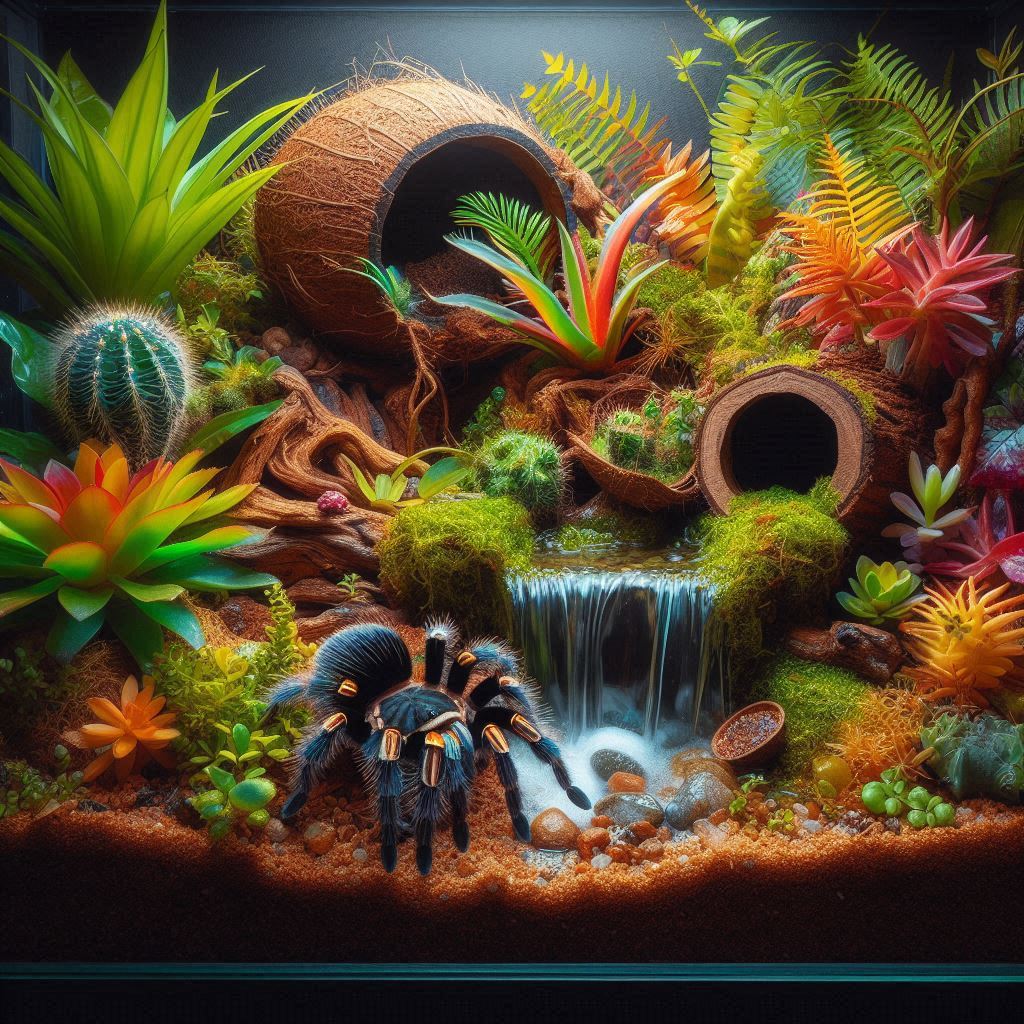Creating a bioactive tarantula enclosure is an exciting and rewarding endeavor for any tarantula keeper. It mimics the natural habitat of the tarantula, promoting a healthier and more engaging environment for both the pet and the owner. This guide will walk you through everything you need to know to set up and maintain a bioactive enclosure, making the process easy to understand, even for a grade 5 student.

What is a Bioactive Tarantula Enclosure?
Table of Contents
A bioactive tarantula enclosure is a living ecosystem within the tarantula’s habitat. It includes live plants, microfauna (small creatures like springtails and isopods), and a substrate that supports this mini-ecosystem. The goal is to create a self-sustaining environment that requires minimal maintenance and provides a more natural and stimulating home for your tarantula.
Benefits of a Bioactive Enclosure
- Natural Aesthetics: Bioactive enclosures look more like the tarantula’s natural habitat.
- Healthier Environment: The ecosystem helps to break down waste, reducing the risk of mold and bacteria.
- Enrichment: The live plants and microfauna offer mental stimulation for the tarantula.
Setting Up a Bioactive Tarantula Enclosure
Step 1: Choosing the Right Enclosure
Select a terrarium that is suitable for the size and species of your tarantula. It should have adequate ventilation and space for the tarantula to move around comfortably.
Step 2: Preparing the Substrate
The substrate is the base layer of your bioactive enclosure. It should be a mix of organic materials like coco fiber, peat moss, and organic topsoil. This mix provides a suitable environment for the plants and microfauna to thrive.
Step 3: Adding Live Plants
Choose hardy plants that can survive in the low-light conditions of a terrarium. Some good options include:
- Pothos: A resilient vine that grows quickly.
- Snake Plant: Easy to care for and adds vertical interest.
- Ferns: Provide good coverage and moisture retention.
Step 4: Introducing Microfauna
Microfauna like springtails and isopods help break down waste and keep the enclosure clean. They also serve as a secondary food source for the tarantula.
Step 5: Setting Up Hides and Decorations
Include natural decorations like bark, rocks, and leaves to create hiding spots for your tarantula. These elements also help to replicate the tarantula’s natural environment.
Step 6: Maintaining the Bioactive Enclosure
Regularly check the humidity and temperature to ensure they are within the optimal range for your tarantula species. Mist the enclosure as needed and trim plants to prevent overgrowth.
Common Challenges and Solutions
Mold and Fungi
If mold appears, increase ventilation and reduce humidity. Adding more microfauna can also help manage mold.
Plant Health
Ensure that the plants are receiving enough light and nutrients. If a plant dies, replace it promptly to maintain the balance of the ecosystem.
Tarantula Behavior
Monitor your tarantula to ensure it is adapting well to the bioactive enclosure. If it seems stressed, make adjustments to the environment.
Table of Information
| Aspect | Details |
|---|---|
| Enclosure Size | Depends on tarantula species; ensure adequate space and ventilation |
| Substrate | Mix of coco fiber, peat moss, and organic topsoil |
| Plants | Pothos, snake plant, ferns |
| Microfauna | Springtails, isopods |
| Decorations | Bark, rocks, leaves |
| Maintenance | Check humidity/temperature, mist as needed, trim plants |
Conclusion
A bioactive tarantula enclosure not only provides a more natural and enriching environment for your tarantula but also makes the hobby of keeping tarantulas more enjoyable and educational. By following these steps, you can create a thriving mini-ecosystem that benefits both you and your pet.
FAQs
- What is a bioactive tarantula enclosure? A bioactive tarantula enclosure is a self-sustaining habitat that mimics the tarantula’s natural environment, including live plants and microfauna.
- Why should I use a bioactive enclosure for my tarantula? Bioactive enclosures provide a healthier and more stimulating environment for tarantulas, reducing the risk of mold and bacteria.
- What kind of plants should I use in a bioactive tarantula enclosure? Use hardy, low-light plants like pothos, snake plants, and ferns that can thrive in a terrarium setting.
- How do I maintain a bioactive tarantula enclosure? Regularly check humidity and temperature, mist the enclosure as needed, trim plants, and monitor the health of the ecosystem.
- What should I do if I see mold in my bioactive enclosure? Increase ventilation, reduce humidity, and add more microfauna to help manage mold.

